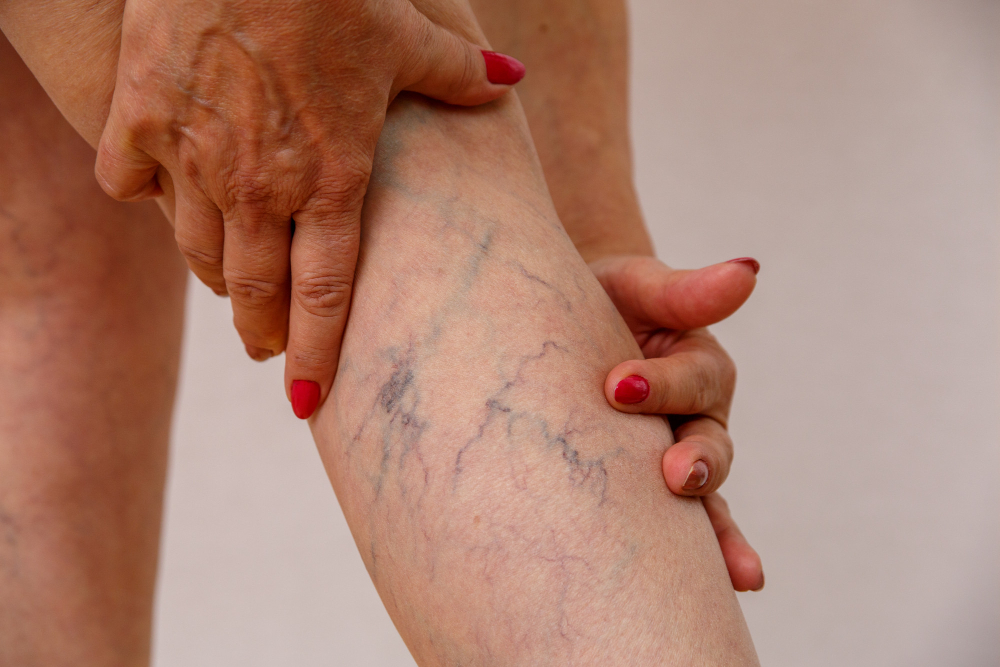
Spider veins, also known as telangiectasias, are small, thin blood vessels visible just beneath the skin’s surface. They most commonly appear on the face or legs and often resemble delicate branches or the strands of a spider web. While generally a cosmetic concern, some people may experience symptoms such as aching, burning, swelling, or leg cramps associated with spider veins.
Spider veins are very common, affecting nearly half of all adults in the United States. Many individuals seek treatment when these veins appear in noticeable areas like the legs or face. Fortunately, there are several highly effective, minimally invasive treatments available that provide excellent cosmetic results with little to no downtime.
Request an AppointmentCauses and Risk Factors
Spider veins develop due to blood flowing backward through damaged vein valves—a condition known as venous reflux. This backflow causes blood to pool in the veins, stretching and enlarging their walls, which makes the veins visible beneath the skin. Common risk factors for developing spider veins include:
- Aging
- Hormonal changes
- Pregnancy
- Obesity
- Sedentary lifestyle or lack of exercise
- Sun exposure
- Family history of spider veins
Diagnosis and Treatment Options
Spider veins are diagnosed through a physical exam, evaluation of symptoms, and sometimes ultrasound imaging. Several minimally invasive treatment options are available:
Compression Stockings
Wearing compression stockings applies pressure to affected veins, improving blood flow back to the heart. This helps control symptoms but does not remove spider veins.
Sclerotherapy
This procedure involves injecting a special solution called a sclerosant into the veins, causing them to collapse and fade. Sclerotherapy is usually done in a doctor’s office, with each session lasting about an hour. Most patients require two to four treatments.
Endovenous Laser Treatment (EVLT)
Also known as laser ablation, EVLT uses a laser fiber inserted into the affected vein via a catheter. The laser heats and seals the damaged vein, redirecting blood flow to healthier vessels.
These modern treatments offer fewer side effects, less pain, and faster recovery compared to traditional surgical vein removal.
Preventing Spider Veins
While spider veins can’t always be prevented, adopting certain lifestyle habits may reduce your risk. These include maintaining a healthy weight, exercising regularly, wearing support stockings, and choosing comfortable, flat footwear. It’s also important to keep moving—especially your legs—during long periods of sitting or standing.
